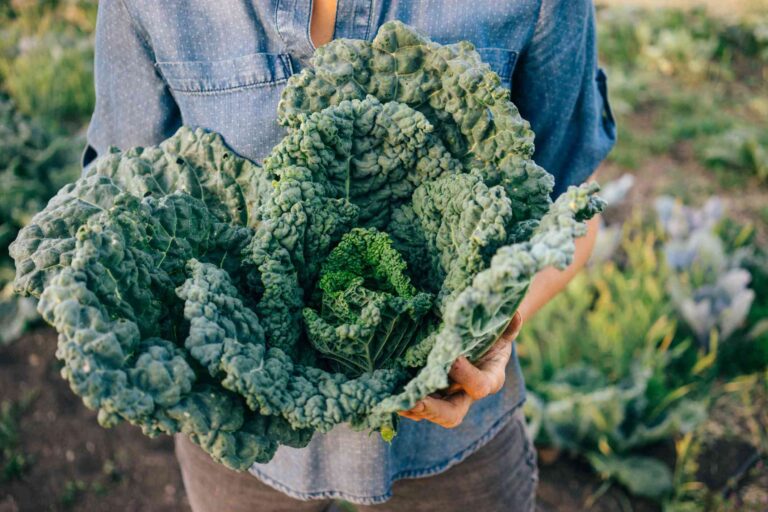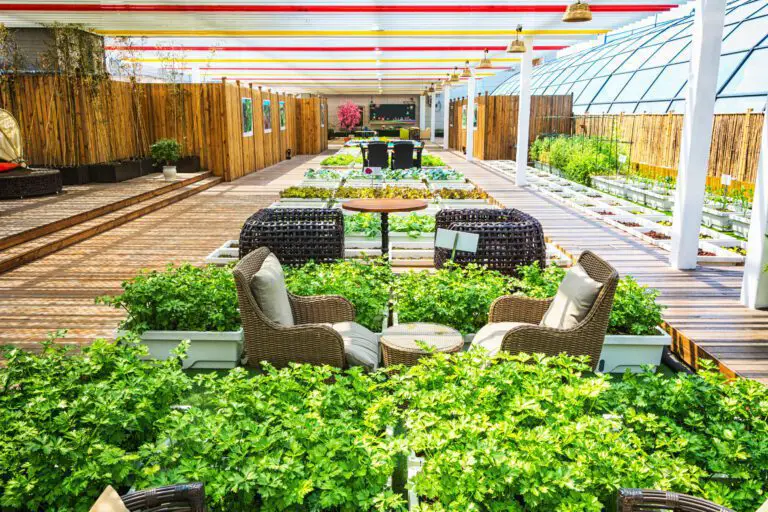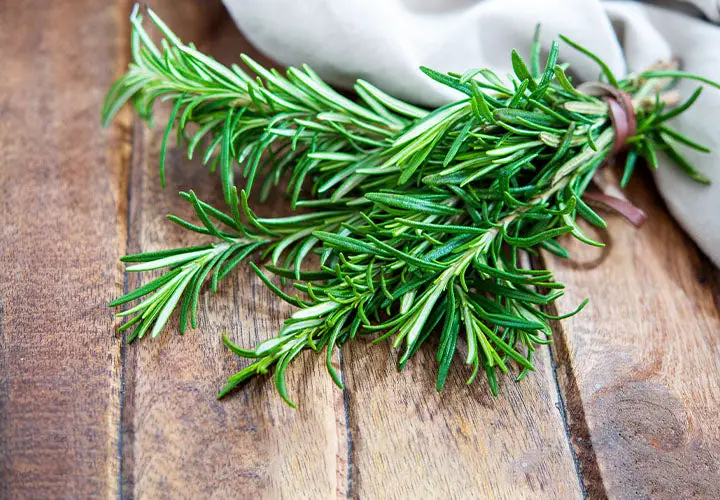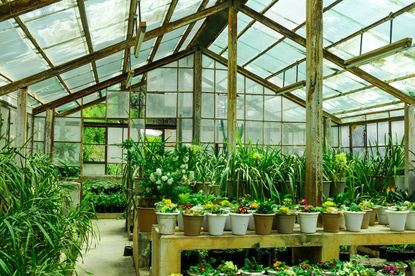Rhubarb Growing: The Dual Nature of Best Pie plant
Table of Contents
Characteristics of Rhubarb Plants
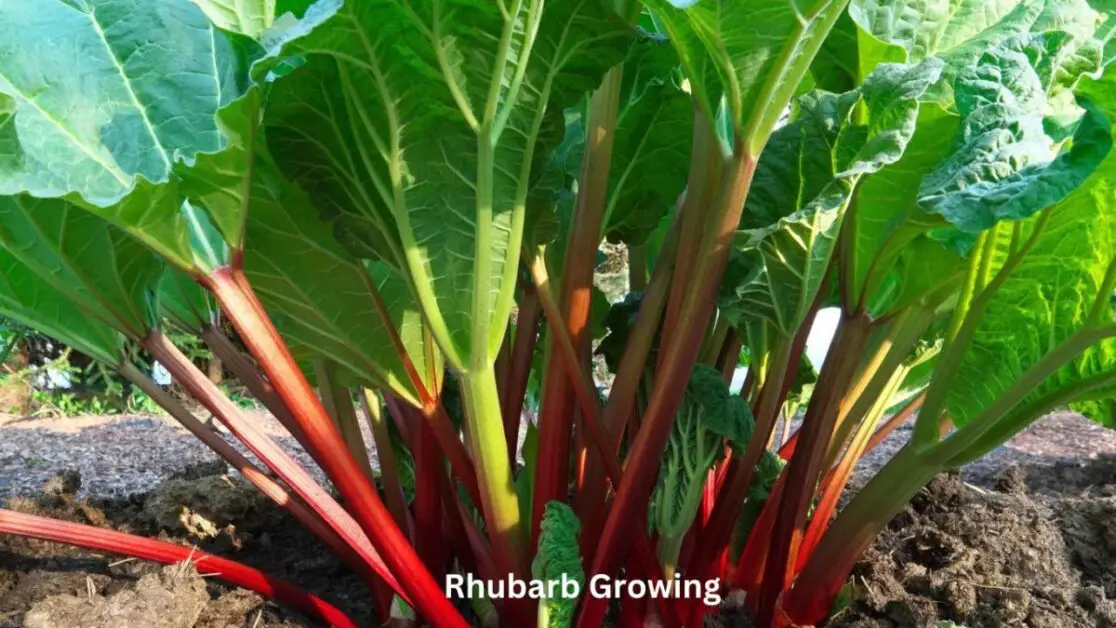
Rhubarb Growing plants are known for their large, vibrant green leaves that have a distinct, almost tropical appearance. These perennial plants belong to the genus Rheum and are commonly grown for their edible stalks, which are tart and flavorful. Rhubarb plants are characterized by their thick, fleshy stalks that range in color from pale pink to deep red, depending on the variety. The leaves of the rhubarb plant are large, heart-shaped, and slightly wrinkled, with long, sturdy petioles that connect them to the stalks.
One of the defining characteristics of rhubarb plants is their ability to thrive in cooler climates, making them a popular choice for gardens in temperate regions. Rhubarb plants are also known for their hardiness and resilience, able to withstand frost and cold temperatures. The roots of the rhubarb plant are thick and robust, capable of storing energy during the dormant winter months to fuel new growth in the spring. With proper care and attention, rhubarb plants can live for many years, producing bountiful harvests of delicious stalks for culinary use.
Ideal Growing Conditions for Rhubarb Growing
Rhubarb plants thrive in cool climates and require well-drained soil with a pH level between 5.5 and 6.5 for optimal growth. It is essential to choose a planting location that receives at least 6 hours of sunlight daily to encourage robust stalk development. Additionally, rhubarb benefits from consistent moisture levels, so it is important to water the plants regularly, especially during hot and dry periods.
When planting rhubarb, make sure to space the crowns about 3 to 4 feet apart to allow room for their expansive root systems to grow. Adding organic matter, such as compost or well-rotted manure, to the soil before planting can help improve fertility and drainage. As rhubarb is a heavy feeder, applying a balanced fertilizer in early spring and again after the first harvest can support healthy growth and abundant yields.
Different Varieties of Rhubarb Growing
Rhubarb, a versatile and beloved plant in the garden, comes in various exciting varieties that cater to different tastes and preferences. One popular variety is the ‘Victoria’ rhubarb, known for its vibrant red stalks and sweet flavor profile. Another commonly cultivated type is the ‘Timperley Early,’ prized for its early harvest season and robust growth. Additionally, the ‘Champagne’ rhubarb variety offers a delicate pink hue and a more subtle tangy taste, perfect for a range of culinary creations. Each variety brings its unique characteristics to the table, adding diversity and richness to the rhubarb growing experience.
Exploring the world of rhubarb varieties reveals a spectrum of colors, flavors, and textures that cater to a wide array of culinary and aesthetic preferences. The ‘Glaskins Perpetual’ rhubarb, for instance, boasts a longer harvest season, allowing for continuous enjoyment of its tart stalks. On the other hand, the ‘Grandad’s Favorite’ variety is revered for its exceptional vigor and resilience, thriving in various growing conditions. Whether you prefer the boldness of deep red stalks or the subtlety of pink hues, there is a rhubarb variety suited to elevate your gardening and cooking endeavors.
Preparing the Soil for Rhubarb
Before planting rhubarb, it is crucial to ensure that the soil is well-prepared to provide the necessary nutrients for healthy growth. Rhubarb plants thrive in well-drained soil rich in organic matter. To prepare the soil, begin by testing its pH level to determine if it falls within the ideal range of 5.5 to 6.5. Incorporating compost or well-rotted manure into the soil can help improve its structure and fertility, ensuring that the rhubarb plants have access to essential nutrients.
Additionally, it is advisable to clear the planting area of any weeds or debris that may hinder the growth of the rhubarb plants. Once the soil is adequately prepared, it is essential to ensure that the planting site receives sufficient sunlight, ideally 6 to 8 hours of sunlight per day. Adequate sunlight exposure is crucial for photosynthesis, the process through which plants convert light into energy for growth and development. By taking the time to properly prepare the soil for rhubarb, gardeners can set the stage for a successful harvest of this versatile and delicious plant.
Rhubarb Growing Crowns
Rhubarb Growing crowns are the starting point for a successful rhubarb harvest, so it’s crucial to plant them correctly to ensure healthy growth. When planting rhubarb crowns, choose a well-draining location with fertile soil that receives plenty of sunlight. Rhubarb Growing plants thrive in soil that is rich in organic matter, so incorporating compost or well-rotted manure before planting can provide essential nutrients for their development.
Prior to planting, ensure the soil is deeply dug to break up any compacted layers and remove any weeds or debris that could impede growth. Dig a hole large enough to accommodate the Rhubarb Growing crown with its roots spread out, ensuring the crown sits just below the surface of the soil. Gently fill in the hole and pat down the soil around the crown to secure it in place, then water thoroughly to help settle the soil and provide moisture for the newly planted crown.
Caring for Rhubarb Growing Plants
To ensure the optimal growth and health of your rhubarb plants, it is essential to provide them with the appropriate care throughout the growing season. Regular watering is crucial to keep the soil consistently moist but not waterlogged, as rhubarb plants prefer well-draining soil to prevent root rot. Applying a layer of mulch around the plants helps retain moisture and suppresses weed growth, which can compete with rhubarb for nutrients.
Additionally, rhubarb plants benefit from regular fertilization to promote robust growth and high yields. A balanced fertilizer high in potassium can be applied in early spring and then again in late spring to support healthy stalk production. It is important to avoid over-fertilizing, as this can lead to excessive foliage growth at the expense of developing stalks. Pruning any flower stalks that emerge can also divert energy back into the plant for optimal rhubarb production.
Harvesting Rhubarb Growing Stalks
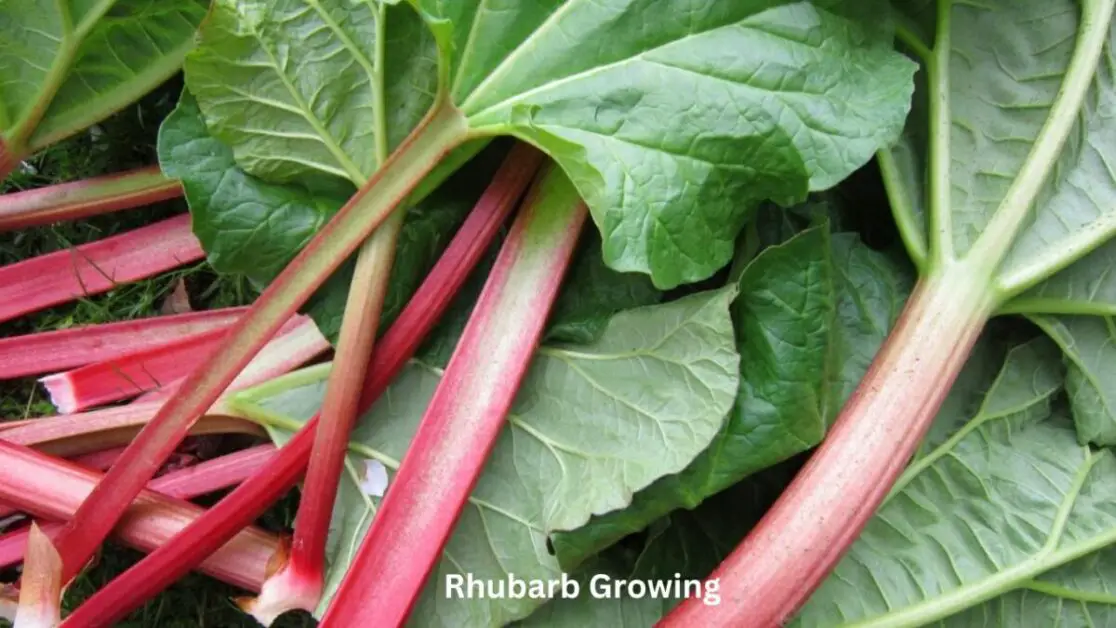
When harvesting rhubarb stalks, it is crucial to wait until the plant is mature, typically ready for harvesting in its second year. To harvest rhubarb, grasp the stalk near the base and gently pull it away from the plant, making sure not to damage the crown. Avoid twisting the stalk, as this can harm the plant. It’s recommended to harvest only about one-third of the stalks at a time to allow the plant to continue to grow and thrive.
After harvesting the Rhubarb Growing stalks, it’s essential to remove the leafy tops immediately. Rhubarb Growing leaves contain oxalic acid, which is toxic and should not be consumed. Trim the leaves off the stalks and discard them properly. The harvested stalks can be stored in the refrigerator for up to a week or preserved for longer-term use through freezing or canning methods. Remember to only harvest stalks that are at least 10-12 inches long for the best flavor and quality.
Common Pests and Diseases of Rhubarb Growing
Many gardeners may encounter common pests and diseases in their rhubarb plants, affecting the health and productivity of this beloved perennial vegetable. One prevalent pest is the rhubarb curculio (Lixus concavus), a weevil that feeds on rhubarb stems, leading to wilting and damage. To combat these pests, it is essential to monitor plants regularly and consider using insecticidal soap or neem oil to deter infestations.
Additionally, rhubarb plants are susceptible to diseases such as crown rot, which can develop due to poor drainage or overly wet conditions. Symptoms include wilting, discolored leaves, and decay at the plant’s base. To prevent crown rot, it is crucial to ensure proper soil drainage and avoid overwatering. Fungal diseases like powdery mildew can also affect rhubarb, manifesting as a white powdery substance on leaves. Regular pruning of affected foliage and improving air circulation around plants can help mitigate powdery mildew infestations.
Propagating Rhubarb Plants
Rhubarb plants can be propagated by dividing mature crowns, allowing gardeners to expand their rhubarb patch or share the plant with others. To propagate rhubarb, carefully dig up a mature plant in early spring or fall, ensuring that each section contains a viable bud. Gently separate the sections, making sure each division has a healthy portion of roots attached. Replant the divided crowns in prepared soil, spacing them adequately to allow for future growth and development.
Once the divided rhubarb crowns are replanted, provide them with proper care to support their establishment and growth. Water the newly propagated plants thoroughly after planting to help reduce transplant shock and encourage root establishment. Mulch around the plants to retain moisture, suppress weeds, and protect the roots during extreme temperatures. Regularly monitor the young plants for any signs of stress or nutrient deficiencies, and adjust care practices as needed to promote their overall health and vigor.
Uses of Rhubarb in Cooking
Rhubarb is a versatile ingredient that adds a delightful tangy flavor to various dishes. In cooking, rhubarb is commonly used in both sweet and savory recipes, offering a unique twist to traditional dishes. One of the most popular ways to use Rhubarb Growing in cooking is in desserts like pies, crisps, and crumbles. Its tartness pairs beautifully with sweet ingredients like sugar and berries, creating a perfect balance of flavors that is sure to satisfy any sweet tooth.
Apart from desserts, rhubarb can also be incorporated into savory dishes to add a touch of acidity and complexity. It can be used in sauces, chutneys, and marinades to enhance the flavor profile of meat and poultry dishes. The tartness of rhubarb cuts through the richness of fatty meats, creating a harmonious blend of flavors that elevates the overall taste of the dish. Additionally, rhubarb can be pickled or fermented to create tangy condiments that can be enjoyed with a variety of dishes, adding a delightful zing to every bite.
Benefits of Eating Rhubarb
Rhubarb, known for its tart flavor and vibrant color, is not only a versatile ingredient in the kitchen but also offers a range of health benefits when consumed. Rich in vitamin K, rhubarb plays a crucial role in bone health by aiding in calcium absorption and contributing to bone mineralization. Additionally, this tangy vegetable contains significant amounts of antioxidants like anthocyanins and quercetin, which help fight inflammation and oxidative stress in the body.
Moreover, rhubarb is a good source of dietary fiber, promoting digestive health by supporting regular bowel movements and aiding in overall gut health. The fiber content in rhubarb can also help regulate blood sugar levels by slowing down the absorption of sugar in the bloodstream. As part of a balanced diet, incorporating rhubarb can be a delicious way to boost overall well-being and reap the nutritional advantages it offers.
Storing Rhubarb Growing for Later Use
To ensure you can enjoy the tangy flavor of rhubarb even after the growing season has passed, proper storage techniques are essential. After harvesting, it is advised to remove any leaves promptly from the stalks as they can draw out moisture and cause the rhubarb to spoil more quickly. Next, lightly wash the stalks to remove any dirt, but avoid soaking them in water as this can lead to rot. Once cleaned, dry the rhubarb thoroughly and then wrap it loosely in a damp paper towel before placing it in a perforated plastic bag in the refrigerator. Stored this way, rhubarb can last for up to two weeks, allowing you to enjoy its unique taste in various recipes.
For a longer-term storage solution, consider freezing Rhubarb Growing. To do this, first chop the stalks into desired pieces and blanch them in boiling water for a brief period before transferring them to an ice bath to stop the cooking process. Once cooled, pat the rhubarb dry and place it in freezer-safe bags or containers, removing excess air before sealing. Frozen rhubarb can retain its quality for up to a year, making it a convenient option for preserving this versatile ingredient. Whether you opt for refrigeration or freezing, proper storage practices can help you savor the distinct flavor of rhubarb well beyond its harvest season.
Creative Ways to Use Rhubarb in Recipes
Rhubarb is a versatile ingredient that can bring a delightful tangy flavor to a variety of dishes. One creative way to use rhubarb in recipes is to make a vibrant Rhubarb Growing compote. Simply cook chopped rhubarb with sugar until it breaks down into a soft, sweet-tart sauce. This compote can be served over yogurt, ice cream, pancakes, or even used as a topping for grilled meats for a unique twist on savory dishes.
Another inventive way to incorporate Rhubarb Growing into recipes is to create a refreshing rhubarb cocktail syrup. Simmer rhubarb with water, sugar, and a hint of citrus until it forms a syrupy consistency. This syrup can then be mixed with sparkling water, added to cocktails, or drizzled over desserts for a burst of bright flavor. Experimenting with rhubarb in different culinary applications can showcase its versatility and add a touch of excitement to your dishes.
Preserving Rhubarb Growing for Extended Shelf Life
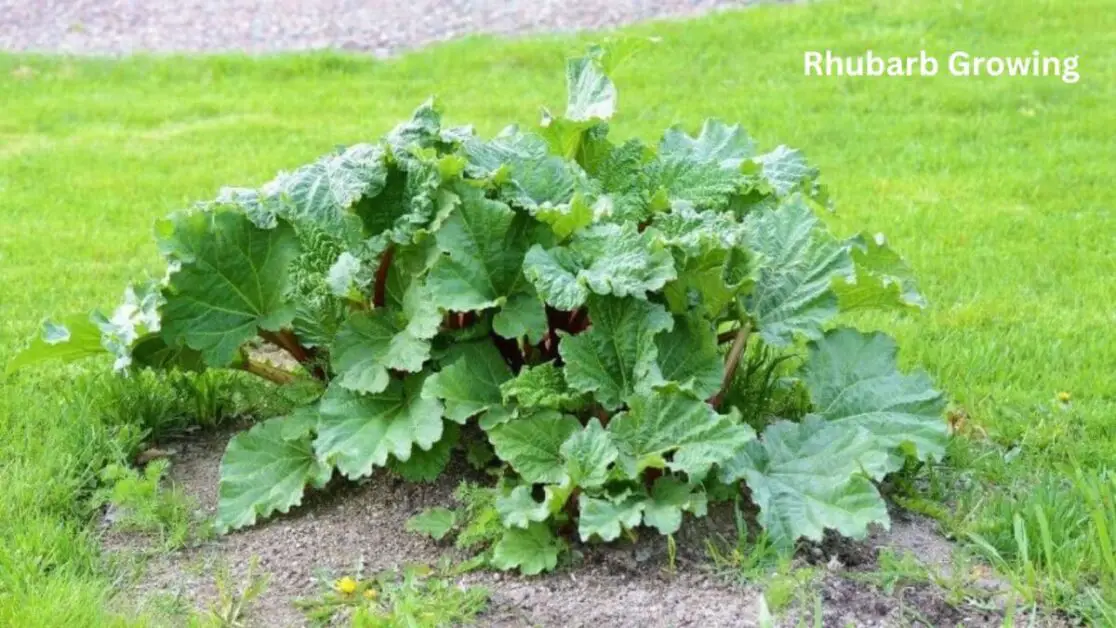
To prolong the shelf life of rhubarb and enjoy its tart goodness well beyond the harvest season, various preservation methods can be employed. One popular approach is to freeze rhubarb, which maintains its flavor and texture remarkably well. To freeze rhubarb, start by washing and trimming the stalks, then cut them into desired sizes. Next, blanch the pieces in boiling water for a minute or two, followed by an immediate plunge into ice water to halt the cooking process. Once cooled, drain the rhubarb and pack it into airtight containers or freezer bags, ensuring to remove excess air before sealing. Label the containers with the date to keep track of freshness.
Another efficient method to extend the shelf life of rhubarb is through canning. Canning preserves rhubarb’s taste and texture while allowing for easy storage in your pantry. When canning rhubarb, choose firm, fresh stalks and wash them thoroughly. Cut the stalks into appropriate sizes and prepare a simple syrup or water-based solution for canning. Follow a reliable canning recipe, ensuring proper processing times and methods to prevent spoilage. Once canned and cooled, store the jars in a cool, dark place, away from direct sunlight. Before consuming, check for any signs of spoilage such as off smells or discoloration, and discard any compromised jars.
Here’s a table about Rhubarb Growing:
| Aspect | Description |
|---|---|
| Planting Time | – Rhubarb is typically planted in early spring or late fall, depending on the climate. |
| – It is advisable to avoid planting during hot summer months to prevent stress on young plants. | |
| Location | – Select a sunny or partially shaded location with well-draining soil. |
| – Ensure the planting area has good air circulation to prevent diseases. | |
| Planting Depth | – Plant rhubarb crowns with the top of the crown just at or slightly below the soil surface. |
| Spacing | – Space rhubarb plants about 3 to 4 feet apart to allow for their large size when mature. |
| Watering | – Keep the soil consistently moist, especially during the plant’s establishment phase. |
| – Avoid overwatering, as rhubarb prefers slightly moist soil rather than being waterlogged. | |
| Fertilization | – Apply a balanced fertilizer in early spring as new growth emerges. |
| – Avoid excessive nitrogen fertilization, as it can lead to weak growth and reduced plant health. | |
| Mulching | – Mulch around rhubarb plants with organic material to retain soil moisture and suppress weed growth. |
| – Maintain a mulch layer of 2-3 inches, ensuring it does not touch the plant crowns directly. | |
| Harvesting | – Do not harvest rhubarb during the first year after planting to allow the plants to establish. |
| – Harvest stalks by firmly grasping them near the base and pulling them away from the plant. | |
| – Leave at least a third of the stalks on the plant to ensure continued growth and vigor. | |
| Pests and Diseases | – Common pests include aphids, beetles, and slugs, which can be controlled through organic methods or insecticidal soap. |
| – Diseases such as crown rot and powdery mildew can be prevented by practicing good sanitation and providing proper air circulation. | |
| Winter Care | – Mulch around the base of rhubarb plants in late fall to protect the crowns from freezing temperatures. |
| – Cut back the foliage after the first hard frost to tidy up the plants and prevent disease overwintering. |
This table provides essential information on various aspects of growing rhubarb, including planting, care, harvesting, and pest management.
Celebrating the Versatility of Rhubarb in the Kitchen
Rhubarb is a versatile ingredient that can be used in a myriad of ways in the kitchen, offering a unique flavor profile that can add a tangy twist to both sweet and savory dishes. From classic rhubarb pies to innovative cocktails and savory sauces, the possibilities are endless when it comes to incorporating this vibrant plant into your culinary creations. Its bright red stalks are not only visually appealing but also rich in vitamins, minerals, and antioxidants, making it a nutritious addition to your meals. Whether you prefer to enjoy rhubarb in jams, compotes, or roasted dishes, its tartness can balance out the sweetness of desserts or enhance the depth of savory dishes, showcasing its incredible versatility.
Furthermore, rhubarb can be pickled, fermented, or candied, offering a range of flavors and textures to experiment with in the kitchen. Its unique taste profile pairs well with various ingredients such as strawberries, ginger, citrus fruits, and spices, opening up a world of flavor combinations to explore. Whether you are a seasoned chef or a beginner cook, incorporating rhubarb into your dishes can elevate the overall dining experience and impress your guests with its distinctive taste. With its versatility and adaptability in recipes ranging from jams to chutneys, soups to cocktails, rhubarb proves to be a beloved ingredient that adds a touch of brightness and complexity to any dish it graces.
Can rhubarb be used in savory dishes as well as desserts?
Yes, rhubarb can be used in savory dishes such as chutneys, sauces, and even as a marinade for meats.
Is it possible to freeze rhubarb for later use?
Yes, you can freeze rhubarb for later use by cutting it into pieces and placing it in an airtight container or freezer bag.
Are there any medicinal benefits associated with consuming rhubarb?
Yes, rhubarb is known for its potential health benefits such as being a good source of vitamins and minerals, aiding in digestion, and having antioxidant properties.
Can rhubarb leaves be eaten?
No, rhubarb leaves should not be eaten as they contain toxic substances that can be harmful if ingested.
What are some unique ways to incorporate rhubarb into recipes?
Some unique ways to use rhubarb in recipes include making rhubarb salsa, rhubarb jam, or adding it to cocktails for a tangy twist.



